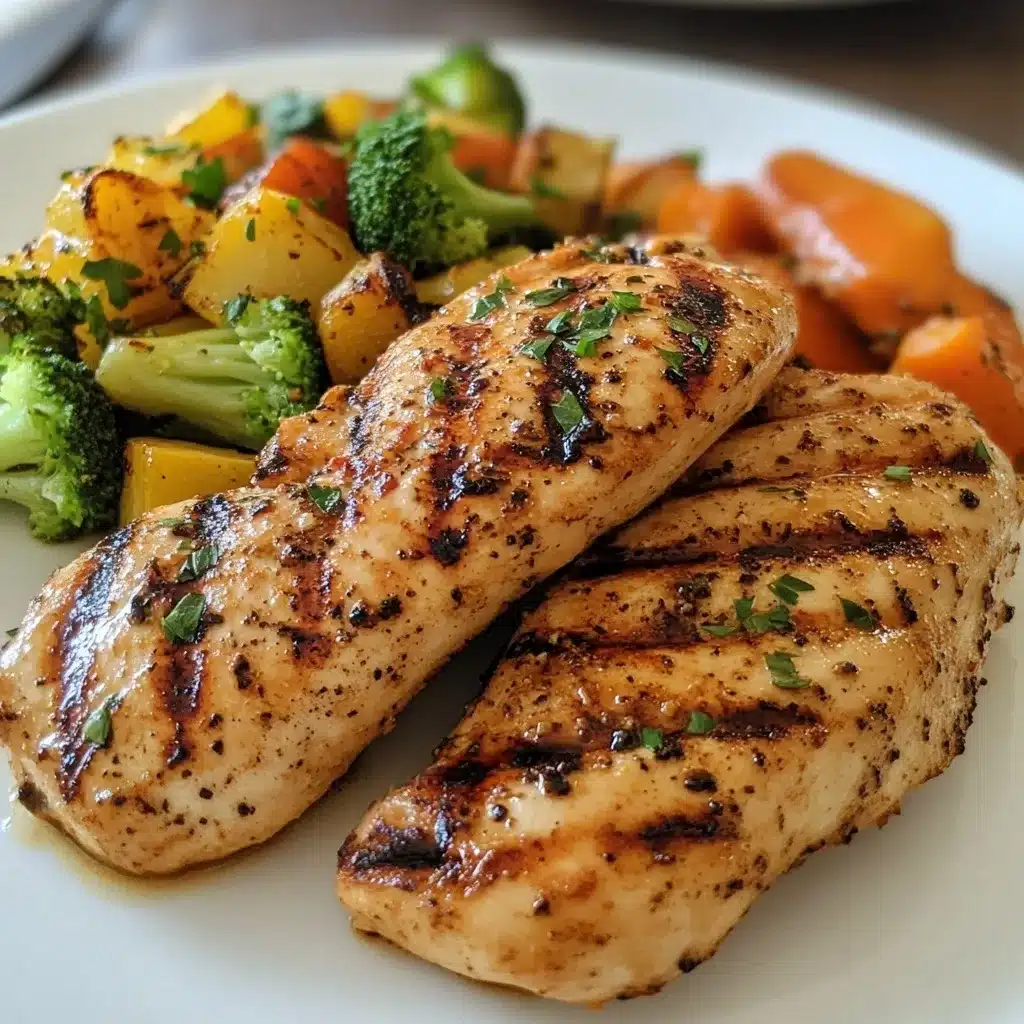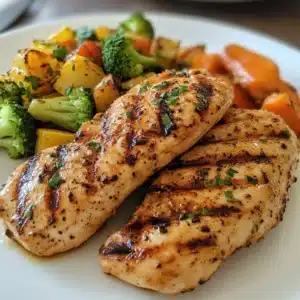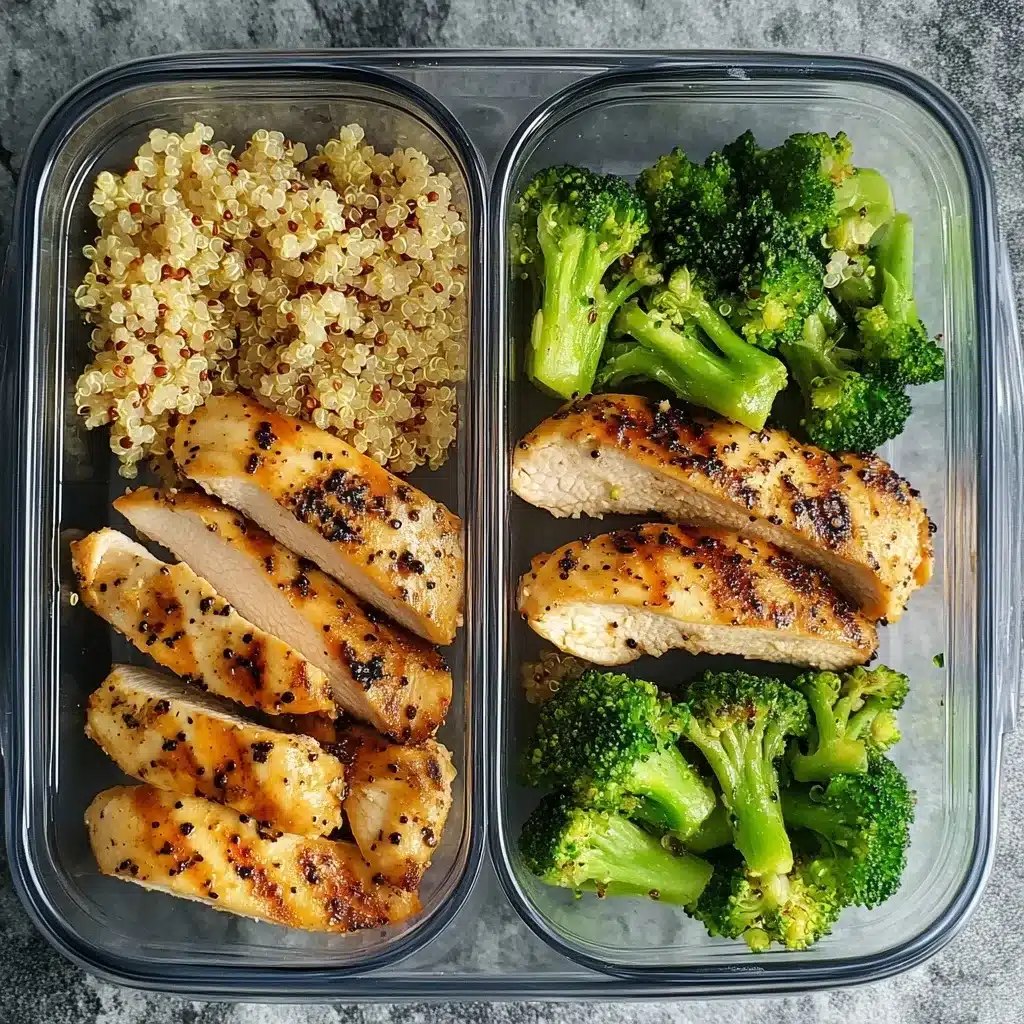Chicken tenderloin nutrition is often overlooked—but if you’re aiming to build a healthier plate, this lean protein source deserves your attention. Packed with high-quality protein, low in fat, and free of carbs, chicken tenderloins offer a smart, clean-eating choice for anyone following a balanced, low-calorie, or high-protein diet. Whether you’re meal prepping for the week or planning a family dinner, understanding the nutritional value of chicken tenderloins can help you eat smarter without sacrificing taste.

This complete guide breaks down everything from chicken tenderloins nutrition facts and calories per serving to how tenderloins compare to chicken breasts. We’ll also cover the healthiest cooking methods, common myths, and even provide a detailed chicken tenderloin nutrition data chart so you can make informed choices at every meal.
Table of Contents
Table of Contents
Understanding Chicken Tenderloin Nutrition
What Is Chicken Tenderloin?
Chicken tenderloins are the thin, delicate strips of meat located just beneath the chicken breast. Often sold alongside or mistakenly identified as sliced breast meat, these cuts are prized for their tenderness and quick-cooking nature. They’re naturally boneless, easy to marinate, and ideal for pan-searing, grilling, or baking.
In grocery stores or butcher shops, chicken tenderloins are sometimes labeled as “tenders” or “chicken strips,” but they’re not processed—they’re simply a specific, naturally lean part of the bird.
Why Chicken Tenderloins Are a Lean Protein Choice
When it comes to chicken tenderloins nutrition, the benefits are clear. They’re high in protein, low in fat, and carb-free, making them a fantastic choice for fitness-focused meals or clean eating. Here’s a quick look at the average nutrition in chicken tenderloin (per 4 oz/113g serving):
| Nutrient | Amount per 4 oz (113g) |
|---|---|
| Calories | 110–130 |
| Protein | 22–26g |
| Total Fat | 1.5–3g |
| Saturated Fat | <1g |
| Carbohydrates | 0g |
| Cholesterol | ~70mg |
| Sodium | ~60mg |
These chicken tenderloins nutrition facts show just how clean this protein source really is. Not only are tenderloins low in calories, but they also deliver essential nutrients like B vitamins (B3, B6), selenium, and phosphorus—all of which support energy metabolism, immune function, and muscle recovery.
Whether you’re looking to lose weight, maintain a healthy heart, or fuel your workouts, the chicken tenderloin nutritional value offers versatility without sacrificing health.
Full Recipe Card: Chicken Tenderloin Nutrition

Grilled Chicken Tenderloin
Ingredients
- 1 lb chicken tenderloins
- 1 tbsp olive oil
- 1 tsp garlic powder
- 1 tsp smoked paprika
- Salt & pepper to taste
- Optional: fresh parsley, lemon slices
Instructions
- Preheat grill or grill pan to medium-high heat.
- In a bowl, coat chicken tenderloins with olive oil and all spices.
- Grill each tenderloin for 4–5 minutes per side until internal temp hits 165°F.
- Let rest 2 minutes before slicing.
- Serve with steamed veggies or brown rice for a balanced meal. Store extras in airtight containers for up to 4 days.
Nutrition
Chicken Tenderloins Nutrition Facts Explained

Chicken Tenderloins Nutrition Facts per 100g and 4 oz
To truly understand chicken tenderloin nutrition, you need to look at the numbers. Whether you’re tracking your macros or just trying to make better meal decisions, knowing the nutrition facts chicken tenderloin offers per common serving sizes helps you stay on point.
Below is a comparison chart of the average chicken tenderloins nutritional facts based on USDA data and standard industry estimates:
| Serving Size | Calories | Protein | Fat | Carbs | Cholesterol | Sodium |
|---|---|---|---|---|---|---|
| 100g (3.5 oz) | 110–120 | 23–25g | 1.5–2.5g | 0g | 65–70mg | 60mg |
| 4 oz (113g) | 120–130 | 25–26g | 2.5–3g | 0g | 70–75mg | 60–65mg |
These values reflect the chicken tenderloin nutrition data for raw meat. When cooked (especially grilled or baked), moisture is lost and nutrient density slightly increases. That means you’ll get more protein per gram once it’s cooked, but also slightly more calories.
One grilled tenderloin (about 1 oz cooked) typically has:
- 30–35 calories
- 6–7g protein
- 0.5g fat
Breakdown of Macronutrients: Protein, Fat, Carbs
Let’s dive deeper into the macronutrients that define the chicken tenderloin nutritional value:
Protein
Chicken tenderloins are a powerful protein source. A 4 oz serving can provide 25–26g of complete protein, which includes all essential amino acids. This makes them ideal for:
- Muscle repair & growth
- Maintaining lean mass
- Supporting metabolism during weight loss
Fat
Fat content is minimal in tenderloins, with most servings offering less than 3g of total fat—most of which is unsaturated. This makes chicken tenderloins a heart-friendly protein option, especially when cooked without added oils.
Carbohydrates
The best part? Nutrition in chicken tenderloin is totally carb-free. That means it fits seamlessly into keto, paleo, and low-carb diets without requiring any modifications.
Nutritional Value of Chicken Tenderloins Compared to Other Cuts
Chicken Tenderloin vs Chicken Breast Nutrition
Both chicken tenderloins and chicken breasts are praised for being lean and protein-rich—but how do they really stack up nutritionally?
Here’s a side-by-side look at the chicken tenderloin nutritional value compared to the classic chicken breast (per 4 oz cooked portion):
| Nutrient | Chicken Tenderloin | Chicken Breast |
|---|---|---|
| Calories | 120–130 | 125–140 |
| Protein | 25–26g | 26–28g |
| Total Fat | 2.5–3g | 3–4g |
| Saturated Fat | <1g | 1g |
| Carbs | 0g | 0g |
While the differences are minor, chicken tenderloins nutrition facts reveal a slightly lower fat content and slightly less protein than breast meat. However, tenderloins are often more tender and easier to cook evenly, especially in quick meals.
If you’re focused on lean eating, chicken tenderloin nutrition gives you nearly all the benefits of breast meat with a softer texture and faster cooking time. It’s an ideal option for quick-prep meals that don’t compromise on protein.
Chicken Tenderloin vs Chicken Thighs: Which is Healthier?
Chicken thighs are known for flavor, but they’re much higher in fat. Here’s how nutrition facts chicken tenderloin compare with boneless, skinless chicken thighs (per 4 oz cooked):
| Nutrient | Chicken Tenderloin | Chicken Thigh |
|---|---|---|
| Calories | 120–130 | 180–210 |
| Protein | 25–26g | 22–24g |
| Total Fat | 2.5–3g | 9–12g |
| Saturated Fat | <1g | 3–4g |
While thighs are juicier and flavorful, they contain nearly 4x the fat of chicken tenderloins and significantly more saturated fat. That makes tenderloins the better choice for heart health, low-calorie diets, and clean eating.
Health Benefits of Chicken Tenderloin

Benefits for Muscle Building and Weight Loss
If you’re aiming for lean gains or fat loss, chicken tenderloin nutrition is hard to beat. With over 25 grams of complete protein per 4-ounce serving, tenderloins support muscle repair, growth, and post-workout recovery.
Their high protein and low calorie count also make them ideal for weight loss. The chicken tenderloin nutritional value promotes satiety, helps curb cravings, and keeps your metabolism active—crucial for burning fat while maintaining lean muscle.
How Chicken Tenderloins Support Heart and Bone Health
Thanks to low saturated fat and zero carbs, chicken tenderloin nutrition fits easily into heart-healthy diets. It’s rich in niacin and B6, which help manage cholesterol and support energy metabolism.
Tenderloins also provide bone-friendly nutrients like phosphorus and magnesium. Combined with protein, these support bone density and strength, especially in active adults and older individuals.
Don’t miss our Taco Bell Chicken Nuggets Macros breakdown to compare how processed chicken stacks up against clean, lean cuts like tenderloins.
Calories, Protein & Fat in Chicken Tenderloins
How Many Calories in Chicken Tenderloin (Grilled, Fried, Baked)?
Cooking method plays a big role in the total calories and fat content of your chicken. Here’s a quick breakdown of chicken tenderloin nutrition across different preparations per 1 piece (about 1 oz cooked):
| Cooking Method | Calories | Protein | Fat |
|---|---|---|---|
| Grilled | 35–40 | 7g | 0.5g |
| Baked | 40–45 | 7g | 1g |
| Fried | 60–80 | 6g | 4–6g |
Grilled and baked chicken tenderloins maintain their clean profile, with minimal added fat. Frying adds significant calories and unhealthy fats, altering the chicken tenderloins nutrition facts drastically.
Want to keep your tenderloin low-cal? Stick to dry heat methods like grilling or oven-roasting with minimal oil or seasoning.
Chicken Tenderloin Protein and Fat Content Breakdown
When it comes to macronutrients, the nutrition facts chicken tenderloin offers are ideal for anyone focused on high-protein, low-fat eating.
Here’s a typical breakdown per 4 oz serving:
- Calories: 120–130
- Protein: 25–26g
- Total Fat: 2.5–3g
- Saturated Fat: <1g
- Carbs: 0g
The chicken tenderloin nutritional value gives you plenty of protein without the baggage of extra fat or carbs. That’s why it’s a top pick for fitness pros, dieters, and even those managing heart health.
Check out Chicken and Broccoli Stir Fry Chinese for a flavorful, macro-friendly dinner idea using lean chicken cuts.
Cooking Methods and Their Impact on Chicken Tenderloin Nutrition

Grilled vs Fried Chicken Tenderloins Nutrition Facts
How you cook your chicken affects its final nutritional profile more than you might think. The chicken tenderloin nutrition data changes depending on added oils, breading, and moisture loss.
Here’s how common cooking methods compare per 4 oz cooked serving:
| Cooking Method | Calories | Protein | Fat | Key Notes |
|---|---|---|---|---|
| Grilled | 120 | 26g | 2g | Best for low-fat diets |
| Baked | 125 | 25g | 2.5g | Retains moisture without added fat |
| Pan-Fried | 170–200 | 23g | 8–12g | Adds oil-based fat |
| Deep-Fried | 250+ | 20g | 15g+ | Increases saturated fat & calories |
Grilling or baking keeps the chicken tenderloins nutrition facts nearly intact, while frying alters the nutrient density by adding excess fat—mostly from oils.
So, if you’re counting calories or watching cholesterol, grilled tenderloin is your best bet for preserving the lean benefits of this protein source.
Healthiest Ways to Cook Chicken Tenderloins
To preserve the clean chicken tenderloin nutritional value, go for cooking methods that enhance flavor without compromising health:
- Grilling: No oil needed, adds smoky flavor.
- Air frying: Crunchy texture with minimal fat.
- Oven roasting: Great for batch cooking with herbs and spices.
- Poaching: Ideal for shredding or salads—moist and fat-free.
Avoid heavy breading or deep frying when your goal is to retain the clean, low-fat profile seen in the original chicken tenderloin nutrition data.
Common Myths About Chicken Tenderloin Nutritional Value
Is Chicken Tenderloin Processed Meat?
One common myth is that chicken tenderloins are processed or artificial. In reality, chicken tenderloin nutrition comes from a natural, whole cut of poultry. Unlike deli meats or chicken nuggets, tenderloins are simply the thin strip of muscle underneath the breast—no additives, no fillers.
As long as you’re buying fresh or frozen chicken tenderloins without added solutions (like sodium or preservatives), you’re getting clean, unprocessed protein. The chicken tenderloin nutritional value is not only high in protein, but also free of artificial ingredients if prepared right.
To ensure you’re buying natural meat, check labels for terms like:
- “No added solutions”
- “Minimally processed”
- “No antibiotics ever”
Does Cooking Remove Nutrients from Tenderloins?
Another myth: that cooking strips away all the benefits in the chicken tenderloins nutrition facts. While it’s true that overcooking can reduce some heat-sensitive vitamins, most of the key nutrients—like protein, phosphorus, selenium, and niacin—remain stable through typical cooking methods.
The biggest change in chicken tenderloin nutrition happens when unhealthy cooking methods are used. Deep frying or heavy sauces can increase fat, sodium, and calories while masking the natural benefits of this lean meat.
For best results, stick with:
- Grilling or baking
- Light seasoning
- Low or no oil techniques
This keeps the nutrition in chicken tenderloin intact and your meals on track.
How to Include Chicken Tenderloins in a Balanced Diet
Daily and Weekly Recommendations for Lean Protein
The USDA recommends that the average adult consume 46–56 grams of protein per day, depending on age, gender, and activity level. Just one serving of chicken tenderloin (about 4 oz cooked) offers 25–26 grams, covering nearly 50% of daily needs in a clean, efficient way.
So how often should you eat it?
For most people, enjoying chicken tenderloin nutrition 2–4 times a week as part of lunch or dinner is a smart move. It’s versatile enough to mix with vegetables, grains, or salads without overpowering the dish—making it easy to stay consistent.
Lean protein helps with:
- Maintaining muscle mass
- Reducing hunger and cravings
- Balancing blood sugar
- Supporting metabolism
Including chicken tenderloins regularly allows you to meet your protein targets without going overboard on fat or sodium—especially when compared to processed meats or fatty cuts.
Sample Meal Plans Using Chicken Tenderloins
Here are some simple ideas that leverage the clean chicken tenderloin nutritional value without sacrificing taste:
| Meal | Dish | Why It Works |
|---|---|---|
| Breakfast | Chicken & Egg Scramble Bowl | High in protein, low in carbs |
| Lunch | Grilled Tenderloin Salad with Avocado | Balanced fats + lean meat |
| Snack | Chicken Tender Skewers | Easy protein on the go |
| Dinner | Baked Chicken Tenderloins with Roasted Veggies | Simple, whole food nutrients |
| Post-Workout | Chicken Tender Stir Fry with Brown Rice | Protein + slow-digesting carbs |
These meal ideas keep the nutrition in chicken tenderloin front and center while pairing it with fiber, healthy fats, and complex carbs for well-rounded nutrition.
Check out Stir Fry & Asian-Inspired Chicken Recipes for clean, flavor-rich meals that complement tenderloin perfectly.
Chicken Tenderloin Nutrition Data Table
Nutritional Value of Chicken Tenderloins (Raw, Cooked, Per Serving)
Whether you’re counting macros or planning clean meals, understanding the numbers behind chicken tenderloin nutrition is essential. Below is a complete nutrition data table comparing raw vs cooked values based on a standard 4 oz (113g) serving.
| Nutrient | Raw (4 oz) | Cooked (4 oz) |
|---|---|---|
| Calories | 110–120 | 120–130 |
| Protein | 24–25g | 25–26g |
| Total Fat | 1.5–2g | 2.5–3g |
| Saturated Fat | <1g | <1g |
| Carbohydrates | 0g | 0g |
| Cholesterol | 65–70mg | 70–75mg |
| Sodium | 60mg | 60–65mg |
| Iron | 4% DV | 4% DV |
| Phosphorus | 20% DV | 22% DV |
| Niacin (B3) | 55% DV | 58% DV |
| Vitamin B6 | 30% DV | 35% DV |
Cooking slightly increases the nutrient density due to moisture loss. The chicken tenderloins nutrition facts remain consistent regardless of preparation—as long as you don’t add breading or oil-heavy sauces.
Nutrition in Chicken Tenderloin Compared to Common Proteins
Let’s see how chicken tenderloin nutrition data compares to other lean protein sources per 4 oz cooked serving:
| Protein Source | Calories | Protein | Fat | Carbs |
|---|---|---|---|---|
| Chicken Tenderloin | 120–130 | 25–26g | 2.5–3g | 0g |
| Chicken Breast | 125–140 | 26–28g | 3–4g | 0g |
| Turkey Breast | 120–130 | 25–27g | 2–3g | 0g |
| Salmon (wild) | 200–220 | 23–25g | 12–14g | 0g |
| Tofu (firm) | 140–160 | 14–16g | 7–9g | 4–5g |
Among lean meats, chicken tenderloins nutrition consistently offers one of the best balances of protein to fat and calories, making them an ideal everyday protein source.
Why Chicken Tenderloins Deserve a Spot in Your Meal Plan
Chicken tenderloin nutrition offers a near-perfect combo of high protein, low fat, and zero carbs. Whether you’re building muscle, losing weight, or just eating clean, tenderloins make it easy to meet your goals without sacrificing flavor or flexibility.
They’re quick to cook, easy to season, and fit into almost any diet. From salads to stir-fries, the nutritional value of chicken tenderloins makes them a smart and satisfying choice.
Follow Easy Protein Kitchen on Pinterest for quick, healthy recipes and daily foodie inspo!
FAQs About Chicken Tenderloin Nutrition
Is chicken tenderloin better for you than chicken breast?
Both cuts are lean and nutritious. Chicken tenderloin nutrition offers slightly fewer calories and fat, while chicken breast may have slightly more protein. Tenderloins are quicker to cook and more tender, making them a great choice for quick, healthy meals.
How many calories are in 4 ounces of chicken breast tenderloin?
About 120–130 calories per 4 oz serving, with 25–26g of protein and just 2.5–3g of fat. These numbers reflect typical chicken tenderloins nutrition facts when grilled or baked without added oil.
How many calories are in 1 grilled chicken tenderloin?
One grilled tenderloin (around 1 oz) has roughly 35–40 calories, 6–7g of protein, and less than 0.5g of fat—a great high-protein, low-calorie snack.
What is the nutritional value of a tenderloin?
The chicken tenderloin nutritional value includes:
120–130 calories
25–26g protein
2.5–3g fat
0g carbs
Plus B vitamins and key minerals like phosphorus and selenium.
